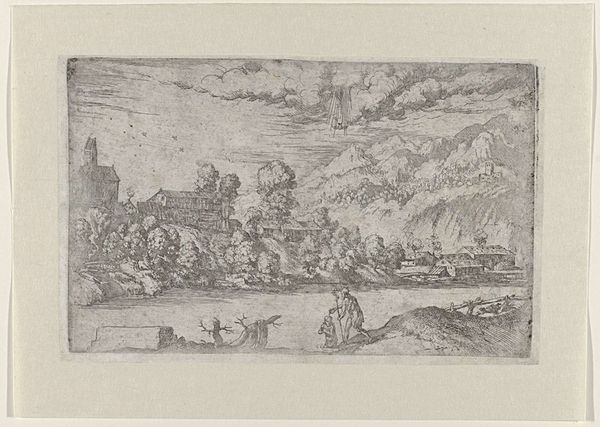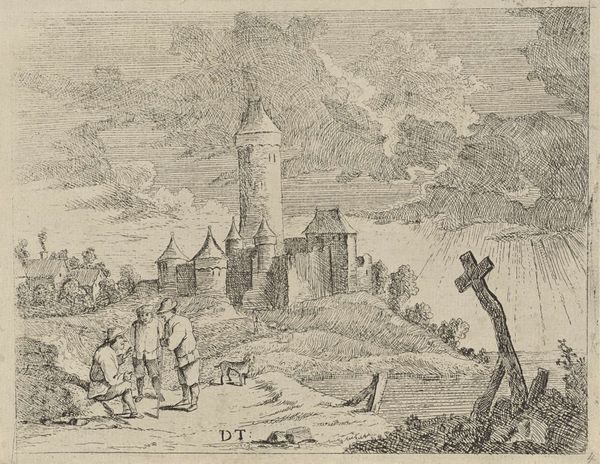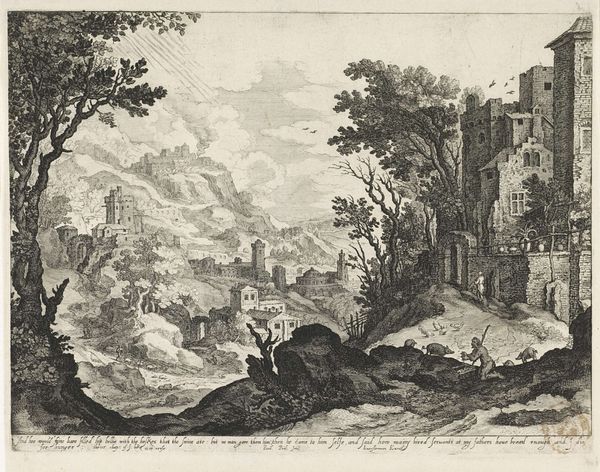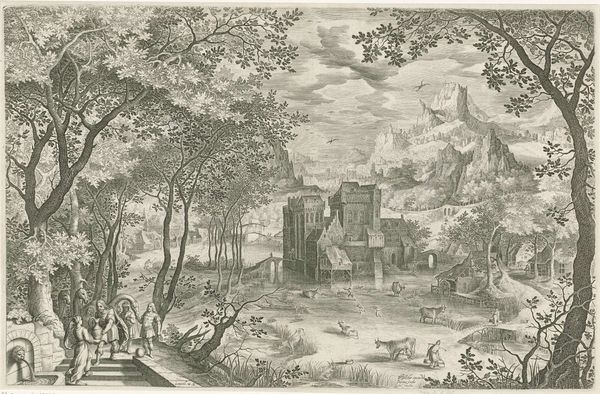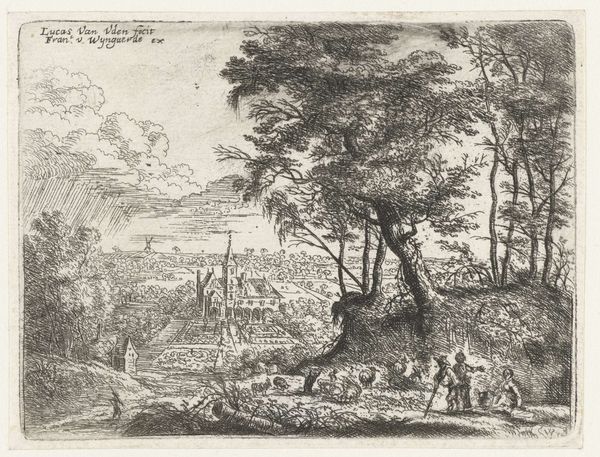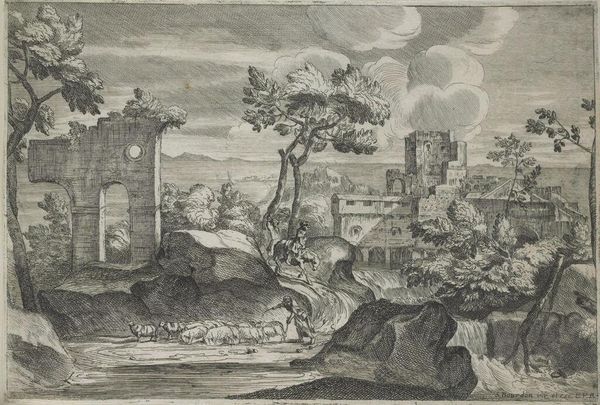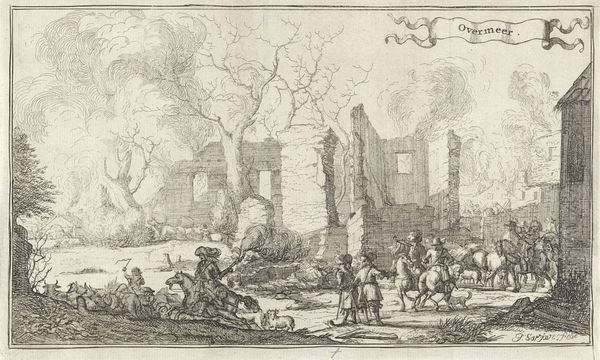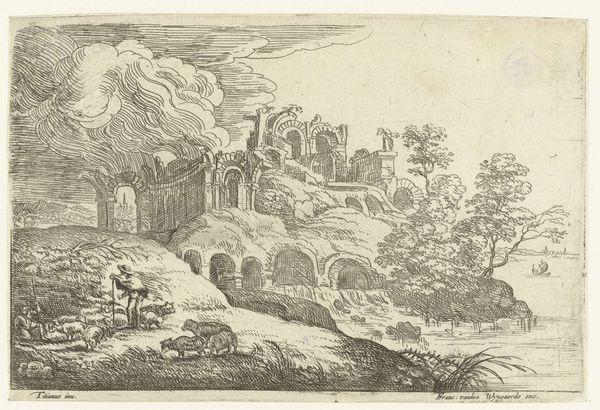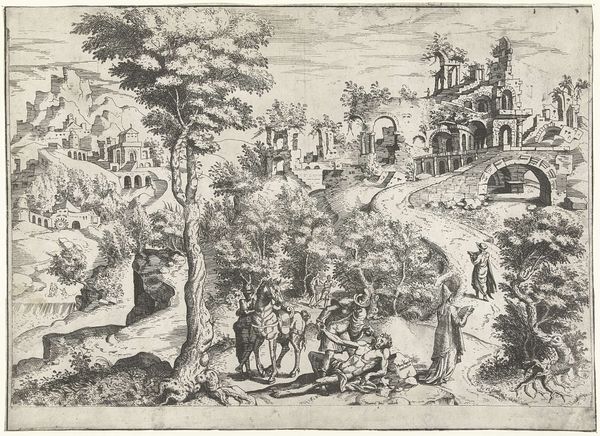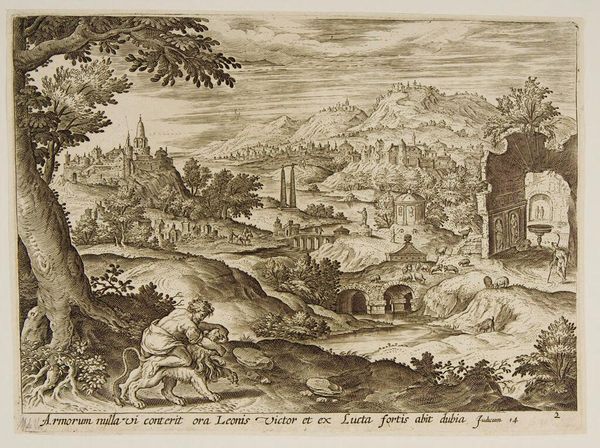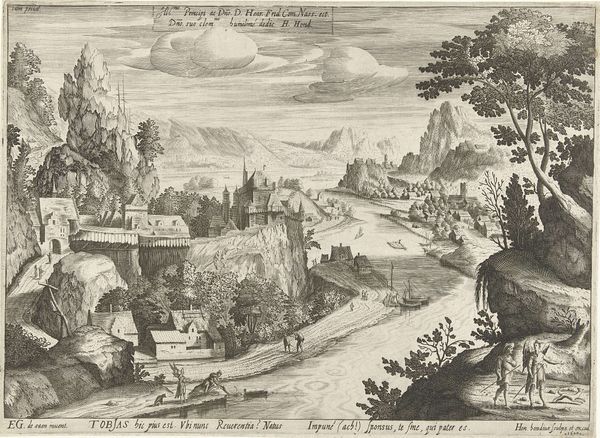
engraving
pen drawing
dutch-golden-age
landscape
history-painting
engraving
realism
Dimensions: height 241 mm, width 330 mm
Copyright: Rijks Museum: Open Domain
Editor: This is "Landschap met de ruïne van Brederode," a pen engraving made sometime between 1604 and 1638 by Gerrit Gauw. It’s stark and yet also has this intimate scene playing out in the foreground. What’s the story here? Curator: I see the ruin itself as the protagonist, actually. Gauw created this during a time when the Dutch Republic was defining its identity through its history. Depicting Brederode Castle in this state of decay underscores the impact of the Eighty Years' War, serving as a reminder of struggle and resilience, what do you think that imagery would suggest to viewers during this time? Editor: A source of pride maybe, because they endured, but perhaps also a warning of what can happen when societal order collapses? Curator: Precisely. Think about the patrons of such imagery. Were they the aristocracy lamenting a bygone era, or a rising merchant class eager to stake their claim on history? And the placement of the commoners—fishing and conversing—in front of the ruins subtly shifts focus from aristocratic downfall to the enduring strength of the Dutch people. Editor: That makes sense. It’s interesting how a seemingly simple landscape carries such political weight. Curator: Exactly. The politics of imagery are rarely simple. Looking at how art shapes public memory offers a powerful way to understand this period of Dutch history. I wonder, does it make you think of current uses of public memory today? Editor: Definitely gives me a lot to consider about whose stories we tell and why. Thanks for the insight! Curator: My pleasure! Art is constantly reshaping, and is reshaped by our perspectives on the society it reflects.
Comments
No comments
Be the first to comment and join the conversation on the ultimate creative platform.


